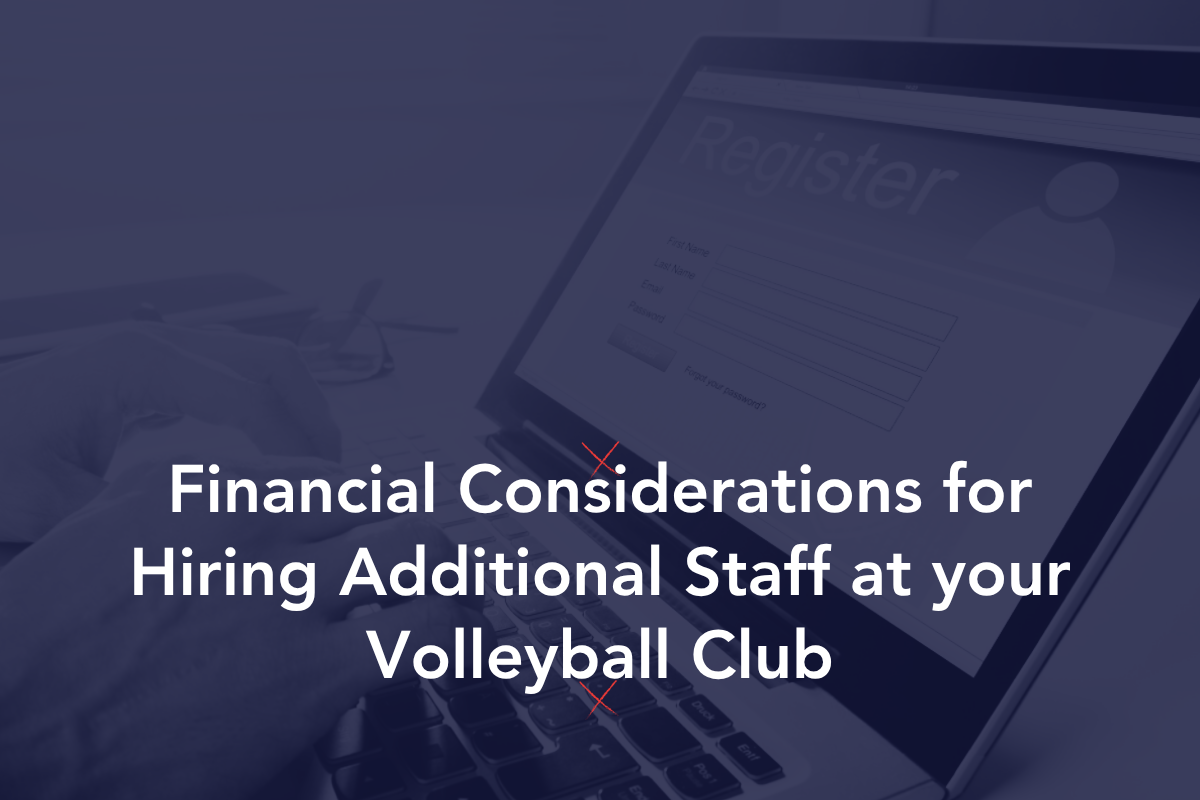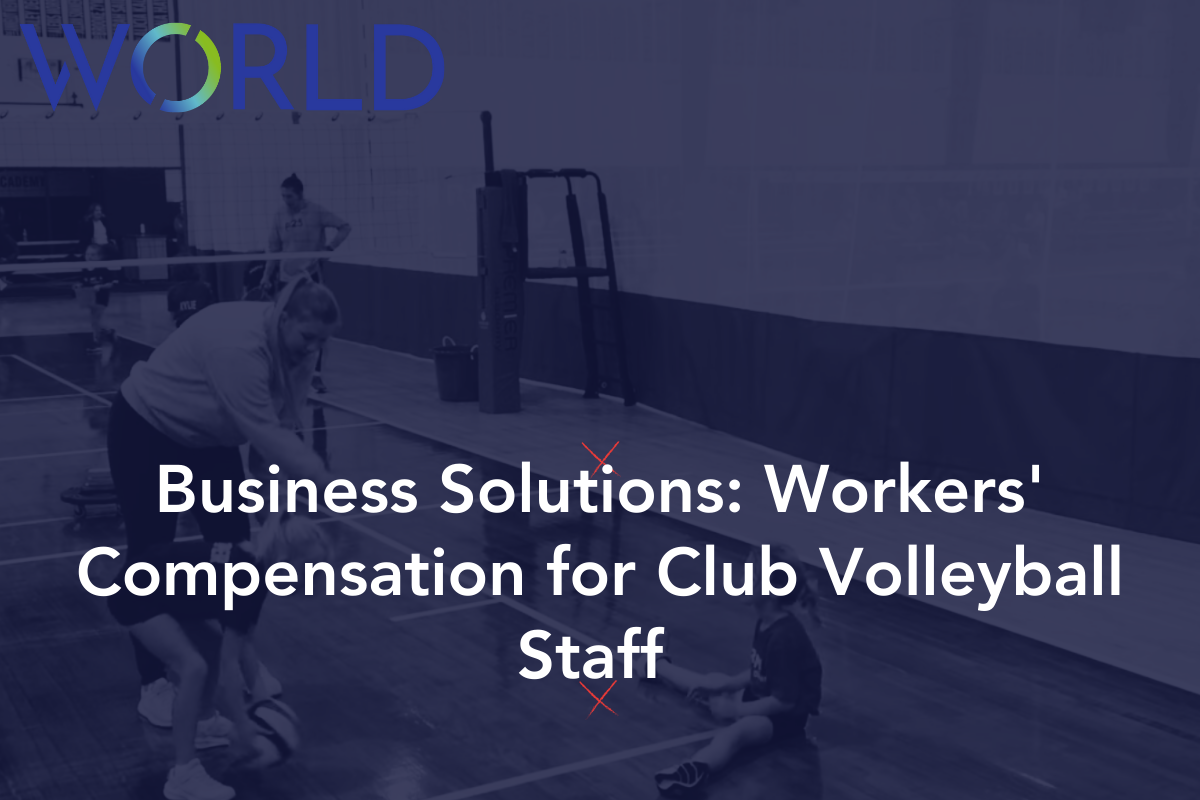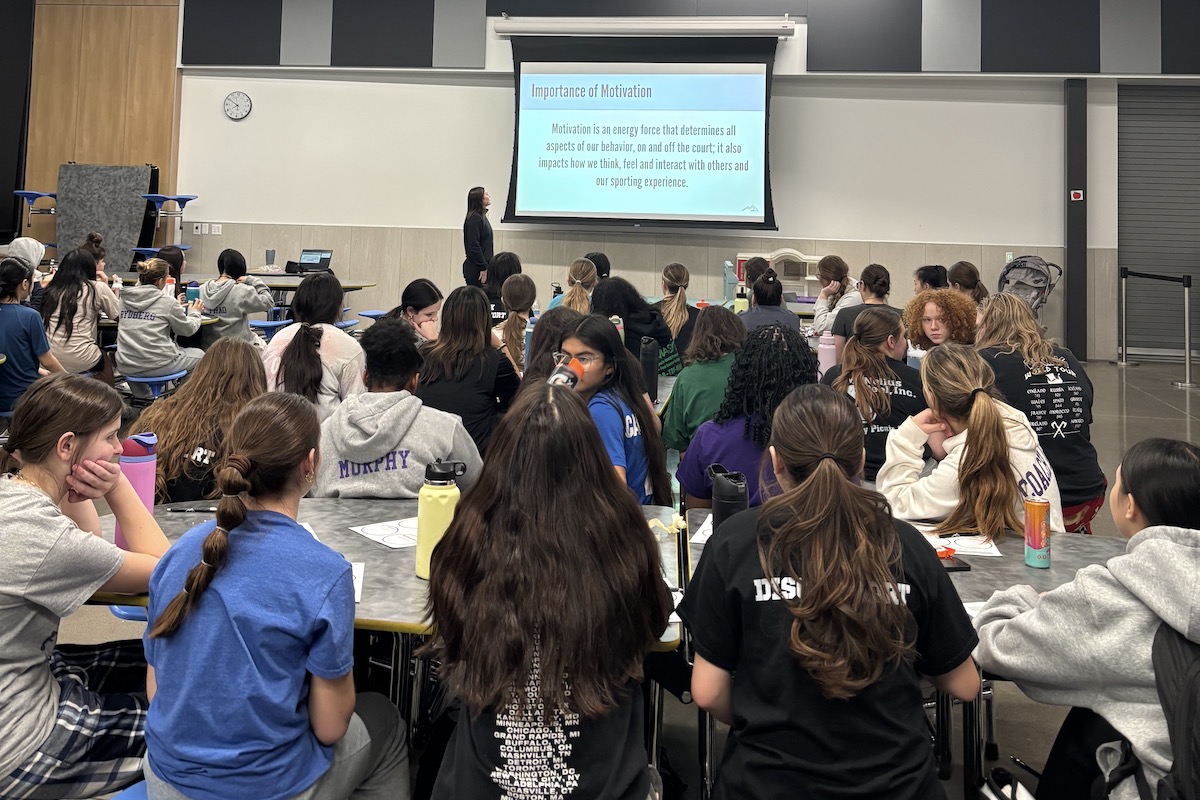Club directors across the country have been spending the last couple of weeks crunching numbers, having discussions with their club staff and financial advisors, reviewing options to keep their business afloat, and hoping to be able to salvage some of the club season after the COVID-19 pandemic subsides.
The JVA Business Solutions series will address important decisions club directors need to make and JVA will work to provide information regarding those decisions that pertain to clubs across the wide spectrum of organizational and operational structures clubs operate within.
One critical decision facing clubs due to the shutdown occurring midseason is determining if the shutdown warrants return of club fees to parents based on what percentage of the services expected were they able to deliver and what is the dollar value of what remains, depending on if/when the season is able to restart. Clubs are working to quantify that amount based on a number of factors that will be unique to their situation. There are many factors that club owners have to consider when determining that amount. Once an amount is potentially determined, clubs will have a few ways to offer that amount back to families, which will again be based on their situation.
Here are four 4 options for your club to consider so you can decide which one works best for your club. Note that when referencing credits and refunds, we are referring to that potential amount clubs may decide to return to families.
#1 Refund of Fees Only
The first option is to simply offer any potential fee back to families as a direct payment via cash or credit card refund. All clubs have a portion of their costs that are incurred early in the season that are not recoverable. Clubs that tend to have costs that were not pre-paid and are not being incurred due to the shutdown generally should be able to offer refunds in this fashion because there is someone “above you” in almost all aspects of this situation. For example, if you rent court space from schools where the schools have been closed for the remainder of the school year and you aren’t paying for time you aren’t using.
- Facility Fees- your club should be able to recoup any dollars from the time you are not practicing.
- Tournament Fees – your club should be receiving all tournament entry fees back from events that were canceled.
- Coaches Pay – if you have 1099 contractors that are paid hourly, any canceled practices would not require your club to pay those 1099 coaches. Many clubs have been doing their best to pay coaches for hours they would have worked.
- Team fees from USAV are being refunded (this may vary by region).
- Hotels are refunding for unused rooms
One way to calculate the amount of the refund is to follow a formula that would equal the amount members would pay relative to the canceled portion of the season.
- Take the total cost of the season (Coaches pay, tournament fees, court rental, volleyballs/equipment).
- Subtract Administrative costs: This could include full time salaries, utilities, membership dues, and anything that relates to the club as a whole and not just practices/tournaments for a specific team. Some of these are spread across the year, while others are sunk costs that aren’t directly related to the part of the season that was canceled. Try to only use the sunk costs in this calculation.
- Calculate the percentage of practices and tournaments that were missed.
- Refund that percentage of the remaining season cost (after administrative costs are subtracted).
#2 Credit for Future Programing Only
Clubs that tend to have a larger percentage of their costs tied to longer term obligations will tend to favor this type of fee return to families. For example, a club that has a facility lease or mortgage payment, coupled with utilities and operational costs, may not have the cash flow over the long term to offer all potentially returned fees as a direct refund and can consider offering families a credit to apply toward future programing. This could be beneficial for Spring beach season directors who can apply the payments collected toward the Summer season.
One exception would be for 18s teams that have decided to cancel their season altogether, but most teams have not made this decision, especially if they have qualified for USAV Nationals or committed to attend AAU National Championships.
Offering a credit for your families would entice them to commit to your club next season, while also helping your club’s cash flow in order to pay overhead and administrative costs associated with running your club and/or facility. One incentive for a family to take the credit and use it towards next years fees, is to have a club guarantee to lock in this year’s club dues amount for next year and the family avoids any possible price increase.
There is another incentive your club can offer to families who take a credit, which is described in the next option.
#3 A Refund/Credit Choice or Combination
An option that may appeal to more clubs is offering families the choice of a combination of a refund and a credit towards future programing of the amount of fees being potentially returned to families. To incentivize families to choose the credit option, clubs could offer a percentage incentive of that amount if they take that credit. The total amount of the refund/credit option would still equal the amount members would pay relative to the canceled portion of the season (discussed above).
Two examples are below.
Smaller club dues:
If the family has a $500 amount offered, they could take it as a straight $500 refund or receive a 5% incentive to take a credit for the amount being offered. In this case, that would amount to the original $500 plus a $25 incentive, making the credit worth $525. The reasoning is that it is very advantageous from a cash flow perspective to keep the money now in exchange for offering a discount on future programming.
Larger club dues:
Your club could offer the family the opportunity to take a mix of their choice between refund and credit. For instance, if they have a $1,000 amount being offered, they might want to take all $1,000 as a credit, but they might be interested in taking $500 as a refund and $500 as a credit, on which your club can offer the same 5% incentive, making the credit worth $525. Directors could choose to use a higher percentage incentive if they want to. This scenario could create a lot of accounting work to track the variety of refunds, credits and incentives, but it might result in more credits taken, as some families might not be willing to take their entire amount as a credit.
Another incentive for a family to take the credit and use it towards next years fees is to have a club guarantee to lock in this year’s club dues amount for next year and the family avoids any possible price increase.
Clubs may leave the decision up to an entire team. If a team decides to continue the season (knowing the situation may change any day), and one family decides it can no longer afford to pay due to financial hardship or due to conflicts with the new tournament dates, that family may opt for a refund, however the additional costs, if any, caused by the family’s departure would be absorbed by the remaining team members. This scenario can be handled on a case by case basis. The club could offer to find a surrogate family for the athlete to travel and stay with at events, or seek fundraising opportunities.
#4 Donate
With the amount a club determines may be returned, families could chose to donate the funds in a few different ways:
- If the club is a non-profit, donate that amount (or a portion you are more comfortable with) to the Club. Such donation is tax-deductible.
- If the club is ‘for profit’ and has a non-profit set up for scholarships, they can direct their amount, or a portion of it, to that non-profit.
One other factor worth mentioning that may affect the calculation of the amount potentially given back to parents is the amount of virtual programming your club can offer. Many clubs with facilities now have a team of full time staff and run a variety of programs and tournaments, and they operate as a year round business. These clubs have responded quickly to the at-home learning model, and have implemented a virtual online training program for their athletes without missing a practice.
- A Virtual Calendar is laid out for athletes and coaches every week by the club’s full time staff
- Practices continue at the scheduled times through Zoom, Google Classroom, or Go to Meeting at the same set times as when they were in the gym.
- Workouts are provided by a strength professional with videos to demonstrate each movement.
- Athletes are completing journal entries and mental training
- Coaches are monitoring their athletes’ progress and checking in on them daily
- Program directors are virtually meeting with their coaches and providing them with the resources to continue their virtual training sessions.
A club can present this Remote Learning program to its families and explain that cancelled tournament fees and travel expenses already paid by families for those tournaments will be refunded, however that amount will most likely be determined at the end of season, since there is still so much that is unknown about the remainder of this season.
Whichever option your club decides to do, the most important thing is to be honest and transparent with your members. They will appreciate you for it. Don’t try to predict what could happen in the future, focus on how you can help your athletes and families now because that is in your control.
Related Reading:
COVID-19 Sample Training Calendar
Financial Assistance for Volleyball Clubs During the Coronavirus Pandemic
Navigating the Effects of the Coronavirus
How a Volleyball Club Can Continue to Serve Its Members During the Coronavirus Crisis











